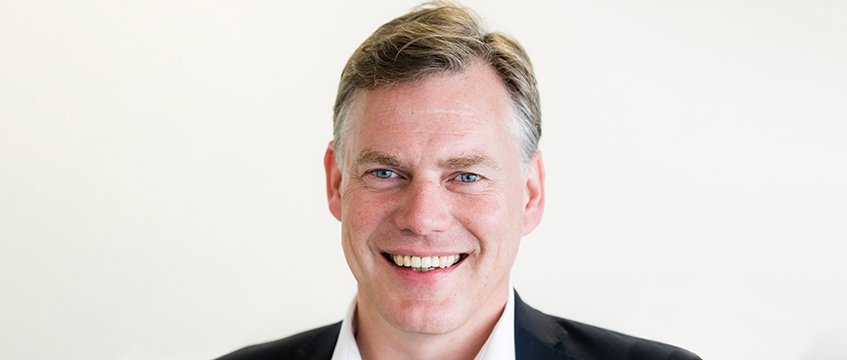COMMENT “There are places I’ll remember… though some have changed.”
Many people will know these Beatles lyrics, and when asked about the city of Liverpool, no doubt The Beatles will be one of the first iconic images to spring to mind, along with LFC, Everton and the stunning waterfront. When we look back, brand Liverpool is still all these things, but with the wider cultural offering, award-winning retail and fabulous listed buildings, juxtaposed with leading global institutions, some things certainly have changed.
Let’s get the elephant out of the room straight away. Yes, Liverpool lost its Unesco World Heritage label earlier this year, but the city’s heritage extends beyond just buildings. It is the people and culture of Liverpool that identify it as a place and which are important to investors and occupiers.However, Liverpool’s forward-thinking attitude towards development and urban regeneration is in itself bringing in significant investment.
So, while we do often have a retro view of the city – and with our enviable array of world-class buildings, why not? – we shouldn’t just look to the past to share our story. We absolutely have to look forward, and this inevitably leads to change and regeneration, but also to renewal and reinvention.
Liverpool ranks third in Condé Nast Traveller’s top 10 cities in the UK 2021, just behind the capital cities of London and Edinburgh. And rightly so. Among many other things, it’s a very walkable city, but the recently announced £710m investment in the region’s transport infrastructure also opens the city up to the possibility of greener transport solutions, meaning that Liverpool can play a significant role in the sustainability agenda.
You will have heard it a lot, but Liverpool is a very resilient city. When Covid-19 restrictions started to lift, but restaurants and bars could only serve outdoors, two major roads were quickly closed and the “Without Walls” campaign was introduced to allow hospitality outlets more space to keep trading and keep the economy moving. Liverpool was also one of the first cities in the UK to be prepared to emerge from the pandemic with a full economic recovery plan and funding package in place. As a result, the city has bounced back.
According to Avison Young’s most recent UK Cities Recovery Index, the overall city index now stands at 95.2 – the highest of the recovery so far, following a gradual increase after 19 July, a trend which can be evidenced by the success of two of the city’s prime leisure and retail developments. Liverpool One, with its outdoor streetscapes, continues to buck national trends, increasing footfall and attracting new brands. This has also been echoed at the city’s MetQuarter, an example of repurposing at its most successful.
As part of its most recent evolution and very much part of its next chapter, Liverpool is creating a new narrative and a new ecosystem around innovation. Knowledge Quarter will be to Liverpool’s knowledge economy what Liverpool One was to its retail and leisure sector. It is home to one of the world’s healthiest buildings, the Spine in Paddington Village, which has attracted the Royal College of Physicians. Global institutions such as the School of Tropical Medicine, University of Liverpool and Liverpool John Moores University have been joined by the Rutherford Centre, which provides state-of-the-art cancer treatment.
The talent pool in the city is vast and the rapidly evolving ecosystem provides opportunity for investors and for businesses looking to relocate and grow. Pall Mall, King’s Dock, Liverpool Waters and Upper Central collectively also create massive opportunities for business investment and sustainable development to the tune of what we believe could be in the region of £10bn, enabling Liverpool to show real climate leadership by creating a green city for the future.
Liverpool also continues to attract world-class talent from the digital and creative industries, with pioneering clusters like Baltic Triangle paving the way for the city to become home to brands like Sony, Disney, Virgin Media, Nintendo, Google and Amazon. According to the Liverpool Enterprise Partnership, there are 4,425 creative and digital businesses in the city region currently, with more than 22,000 employees, and this is only set to rise. Liverpool is also the most filmed UK city outside of London and with the launch of film and TV studios, the Depot, it signifies that Liverpool is set to retain its status as the “Hollywood of the North”.
The Liverpool Place Partnership continues to showcase the city through its private sector collective throughout the year with a series of webinars, events and features. The focus for the partnership is very much about highlighting the city region of the future, the aspirations of its people and the opportunities this presents, with a lens on sustainability.
The music and football perceptions will always remain, but you don’t need to scratch the surface too deep to see what the city really has to offer both now and in the future. In the words of The Beatles: “all these places have their moments”, and Liverpool has had so many, but there is so much more to come. The opportunities that lie ahead for Liverpool make it one of the most exciting evolving cities in the world and not just one of the best places to visit, but also to live, work, and invest. So whether you are an investor or an occupier, the future is bright – the future is Liverpool.
Stephen Cowperthwaite is managing director Avison Young Liverpool and chair of the Liverpool Place Partnership











